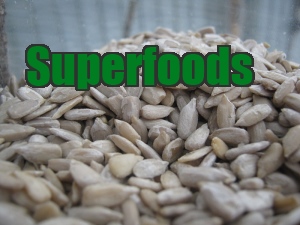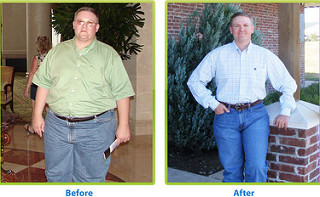How to Lose Weight as a Young Adult
Many young adults have the goal of losing weight. Wonderfully, this is an entirely achievable goal. With the right diet, habits, and exercise, your weight can be controlled. Don't let yourself get discouraged, because health and fitness are a science, we can predict results. Though it is best to consult with doctors and professionals if you are unsure about making changes to your diet or exercise routine, there are quite a number of ways to independently manage your weight.
Steps
Method 1 Knowing the Basics
-
1
Keep a food journal. According to research, people who keep food journals lose an average of six pounds more than people who don't keep a record of what they eat.[1] Make yourself write it all down, even the little snacks. You can use a diet-tracking app on your smartphone, which may be more convenient.
- Figure out how many calories you need to eat each day in order to lose weight. The more aware you are of the calories in the food you eat, the more easily you'll be able to eat the right amount. Take your food journal and look up each item individually. Keep a running tally and add up your calorie total for the day. A commonly mentioned American average is 2,000 calories per day, but everyone has different needs.
- Be thorough. Write it all down, including beverages, condiments, and a description of how the food was prepared. Don't pretend you didn't have that extra scoop of ice cream after dinner. If it goes into your stomach, it goes into the journal.
- Be honest. Record your portion sizes in your food diary. Don't eat too little or too much — keep track. Also, read the ingredients list so that you can be accurate about serving sizes. May diet-tracking apps allow you to scan barcodes or look up foods from a large database that will tell you the number of calories per serving.
- Be consistent. Carry your food journal everywhere that you go.
- Analyze your food journal.[2] Find out when you eat most, and then, more importantly, where you're getting your excess calories.
-
2
Burn more calories than you eat. The only surefire way to lose weight is to eat less than you burn over the course of a day. Sounds simple, but it takes work and consistency. That means paying attention to diet and exercising. If you want to lose weight and stay healthy, you need to start exercising. Aim for at least half an hour of exercise two to three times a week.
- Ask a registered dietitian, your doctor, or physical education teacher about healthy, daily recommended calories for your age and body-type, before making big reductions to your caloric intake.
- Track your energy-output in calories each day. Pedometers, or other weight-loss tracking devices and apps make this easier. This will help you account for how many calories you expend.
- Over-estimate calories, underestimate activity. Recent studies estimate that we tend to eat slightly more than we're able to keep track of in a day.[3] Keep this in mind, and it may help you to account for discrepancies.
- Set mini-goals. Instead of thinking that you need to cut five hundred calories, try one to two hundred at first.
-
3
Make a meal plan, and stick to it. Decide what you're going to eat this week before you're standing at the fridge and trying to figure it out on the fly. Buy the right healthy ingredients to eat the way you want to eat, and plan it out by the calorie. There are many online sites that offer healthy recipes to help you lose weight.
- Be realistic. If you like to eat out a lot, don't try to totally eliminate eating out. Instead, plan on eating home-cooked meals five or six days a week.
- Try to avoid eating late in the evening. Pick a time and be strict about not eating after that time.
- Cut down on snacking. If you can't, choose healthy snacks. Fresh vegetables with guacamole, unsalted nuts, air-popped popcorn that is unsalted and not buttered, or fruit make great weight-loss snacks.
- Treat yourself sometimes. Promise yourself that if you can follow this for six weeks and exercise (if that is one of your goals), you will treat yourself to a restaurant meal one day of the week.
-
4
Drink more water. Water has the double effect of both hydrating your body and filling your stomach with a certain volume of a liquid that has zero calories. Although there is no exact amount of water each person should drink, as every person will have differing water requirements,[4] recommended volumes range from eight to 15 cups of water per day.
- Water can help you feel full, eliminating false hunger.[5]
- Drinking water half an hour before meals can reduce the amount of calories you end up consuming.
- Research shows that people on a weight-loss program who drank an increased amount of water lost weight when compared to those on the weight-loss program alone.[6]
- Carry a water bottle with you.
Method 2 Eating to Lose Weight
-
1
Bring your own lunch. In many cases, cafeteria lunches might not always be the healthiest, or the most lean. In order to make sure your cafeteria food isn't inhibiting your weight loss, bring your own lunch.
- Pack a simple, brown-bag lunch.
- Get a nice lunchbox and thermos to keep food hot.
- Mix it up with a bento box.
- If you have to use the cafeteria, go for the salad instead of the pizza. If you don't have this option, try to limit your portion sizes.
-
2
Eat more fresh fruits and vegetables. Fruit helps to satisfy your sweet tooth, thanks to its natural sugars. Fresh vegetables help you fill up more quickly. Fruits and vegetables contain fiber to help you feel full longer.[7] Try some of these tips to introduce more fruit and vegetables into your diet:
- Eat what's in season, and eat fruit and vegetables for snacks, or for dessert. When you eat apples in the fall, for instance, or cherries in late summer, it might as well be an indulgent dessert. Cut up celery, carrots, peppers, broccoli or cauliflower and dip them in a light salad dressing or hummus.
- Eat vegetables as a main dish. For example, make a stir-fry or a hearty salad and add just a few ounces of cooked chicken, salmon, or almonds.
- Snack on fruit or vegetables between meals in order to control your hunger.
-
3
Eat more whole grains and cut simple carbohydrates. Whole wheat bread, oatmeal, whole wheat pasta, sweet potato, and brown rice are all excellent sources of energy and nutrition. Combined with the right proteins and vegetables, whole grains are perfect all-around nutrition.[8]
- Simple carbohydrates include white bread, processed flour, and white sugar. This gives you energy quickly, but then comes with a crash. It gets transferred into fat very quickly.
- Substitute whole wheat flour or oat flour in baked goods. You might need to add additional leavening ingredients. Put barley in your soup instead of rice, or try a pilaf with barley, wild rice, or brown rice.
- Avoid processed foods, like white bread, semolina pasta or crackers, or processed sweets like candy bars, sugary beverages, and dessert snacks.[9]
-
4
Choose fats that are better for your body. Such fats as those from nuts and olives can help you to feel full longer. These unsaturated fats have many health benefits and, in moderation, can help you to lose weight. Look for these on labels: "unsaturated fats," "monounsaturated fats," or "polyunsaturated fats." These are the good fats.
- Avoid saturated fats, as they can increase your desire to eat more and cause negative effects on your body, especially your cholesterol and your heart.[10] Many junk food items are high in these saturated fats, and they contribute to a vicious cycle of poor eating habits.
- Watch out for vegetable dips and salad dressings (especially creamy, mayonnaise-based dips such as ranch), as these can be very high in fat.
- Avoid fast food and drinks with a lot of cream, which tend to both be very high in unhealthy fats.
-
5
Choose lean proteins instead of fatty ones. Protein is important for organ function, as well as building muscle if you plan on working out. There are a variety of sources for protein, but the drawback is that protein can sometimes contain a lot of unhealthy fats.
- Select lean cuts of beef, or extra-lean ground beef, when you're eating red meat.
- If you like chicken, remove the skin.[11]
- Skip the fatty deli meats, like bologna and salami. Choose lean turkey or roast beef as a replacement.
- Vegetarians can get plenty of protein from soy, nuts, beans and seeds. Lentils, legumes, and beans are excellent sources of fiber and protein as well.
- Eat low-fat dairy for a source of protein, including low-fat cheeses and milk and nonfat yogurt. [12]
-
6
Cut the salt from your diet. Eating more sodium causes your body to retain water, which can cause you to feel bloated and gain more weight. The good news is that you'll sweat that weight out very quickly, so an easy way of cutting some pounds is to eat less sodium in your diet.
- Instead of salt, try spicing your meals with chili flakes, fresh salsa, or cajun spices and seasonings.
- Some people claim that unsalted foods will taste much saltier eventually, if you cut salt out for a while and let your taste-buds re-acclimate.
- Watch out for foods containing a lot of cheese, as they can be very salty.
-
7
Eat at home. Going out to eat makes it too easy to cheat. Food sold at restaurants is commonly much higher in fat, sodium, and other weight-loss killers. The portions are also often much larger than what you might usually eat at home. Instead of heading out, try to make your own meals.
- Eat dinner with your parents. Some research shows that children who do not eat dinner with their parents at least twice a week were 40% more likely to be overweight.[13]
- Don't eat while you do other things. Watching television or movies, reading, playing video games, or studying while you eat often causes people to eat much more food than they normally would. So, don't buy that salty, buttery popcorn if you go out to see a movie; you might eat too much.
-
8
Make sure that you don't get hungry. By eating small portions throughout the day at regular intervals, you can keep hunger at bay. Between your meals, eat a 150-calorie snack to stave off hunger and keep you from overeating later. Be sure that you don't eat a fattening snack such as sweets or chips. When you're hungry, your body conserves calories and slows down your metabolic processes.[14]
- Research suggests that increasing meal frequency might not help increase your metabolism.[15]
-
9
Don't skip meals. Lots of people think skipping a meal will help to lose weight; however, when you skip meals, your body stops breaking down fat and starts breaking down muscle tissue. So, you should be wary of diets that involve meal-skipping.[16]
- Muscle tissue burns more calories at rest than other tissues, so you're actually working against your goals.
-
10
Be sure to eat breakfast. This is the most important meal of the day. Breakfast is not only important to help give you the energy to take on the morning, it can also be a vital part of weight-loss.
- Breakfasts that are high in protein were not only observed to increase satiety in the morning, they also helped people to feel more full in the evening. Try to eat at least 35 grams of protein with breakfast, in order to help you feel more full throughout the day.[17]
- Eat healthy cereal for breakfast. One recent study revealed that people who eat cereal for breakfast each day have a much easier time losing weight than people who eat other types of breakfast. Start your day right with a high-fiber, nutrient rich natural cereal, or oatmeal.[18]
- Switch to skim milk. Each lower-fat step you take down, you're losing 20% of the calories. Switching to a low-fat version of milk is an excellent way to cut down on the calories you're taking in, without having to sacrifice nutritional benefits.
Method 3 Exercising
-
1
Start by walking. Walking around your neighborhood costs nothing and is a great way to start moving. This can help you to burn more energy than you take in. You can also try other low-impact exercises like swimming, riding a bike or slow running. If you have a dog, volunteer to be the one to walk her; walking a dog is a great way to ensure regular exercise.
- Buy a pedometer. Attach the pedometer to your belt and try to reach specific goals you set for yourself.
- Take the scenic route. Go a little bit out of your way as often as you can, and this can add up to a lot of extra walking. If you normally take a left on one street, go right instead, in order to walk a couple extra blocks.
- Try not to drive when you can.
- 2 Get a video game that makes you move. D.D.R. (Dance Dance Revolution), WiiFit, and some new virtual reality games can get you moving around quite a lot. If you're looking for a fun way to get some exercise, think about getting an action-oriented video game. They can make you forget that you're exercising.
-
3
Try machines at the gym or at home. You can use a treadmill, an elliptical trainer, a stationary bike, a rowing machine or a stair climber. Start with short sessions and gradually add minutes as you get more fit. Also, use the settings on the machines to increase the intensity as you lose weight.
- Use a variety of different machines until you find something you like.
- Consult a personal trainer, or one of your instructors to make sure you're using proper form. Improper form can result in injury.
-
4
Take an aerobics class. You can take a traditional aerobics class or try any number of movement-based exercise routines. These are great ways of keeping yourself motivated in a group, having fun moving around, and losing weight.[19] Try any of the following:
- Kickboxing
- Ballet
- Cross-country
- Yoga
- Martial arts
- Cross-fit
- Zumba
-
5
Try strength training. Exercising large muscle groups burns more calories, increases your metabolism, and can help you to lose weight, especially body fat. As your body increases its muscle mass, it requires more energy to keep those bigger muscles going. This minor but constant increase in energy output can lead to weight-loss over time.
- Make sure you build up to higher weights, and work with a coach, trainer or physical therapist to get started safely.
- Do squats with a dumbbell press, to work your lower body and upper body at the same time.
- Perform resistance exercises while sitting or reclining on an exercise ball. You'll strengthen your core while simultaneously working on other areas.
- Rest at least one full day between strength training workouts so that your body can repair, and you do not over-train or injure yourself. Serious injuries resulting from exercise can remain with you for life.
-
6
Play a sport. If you're not into the idea of exercise for the sake of exercise, try finding a fun activity that you enjoy, which has the added benefit of getting you moving. Find an intramural league in your town, or just get together with some friends to play a pick-up game every now and then.
- If you don't like competitive sports, try doing something that you can do by yourself. Swim, or play golf, or go hiking instead of playing a game with a ball and a net.
- Get a bicycle if you want to find a great way to get around and exercise at the same time. Don't spend all that time sitting down in your car when you could be burning calories.
Method 4 Staying Motivated
-
1
Trick yourself into eating smaller portions. While doing these things alone won't necessarily make you lose weight, they can be helpful little tricks to keep you moving on the right path. Sometimes you just have to fool yourself into limiting your caloric intake.
- Eat three fewer bites of each meal.
- Put your knife and fork down between bites.
- Use smaller plates, and fill your plate only once.
- Wait to eat until you feel hungry, don't just snack when you're bored.
- If you do occasionally eat foods like chips, take a small portion out and put them on a plate. Put the rest away and only eat the ones you put out.
-
2
Try creative ways to manage your cravings. Learning to manage your cravings for a big slice of cake or a greasy hamburger is possible, with a little creativity.
- Smell fresh fruit when you want a snack, instead of eating something.
- "Close" your kitchen between meals, especially in the evening after dinner.
- Don't keep sugary or fattening snacks in the house.
- Some studies show that the color blue is an appetite suppressant. Try getting a blue tablecloth, or blue dishware to eat on.
- Wear a rubber band on your wrist, and snap it when you have a craving. Over time, you will form an association between the unpleasant feeling and the craving.
- Chew gum. Gum can help curb your desire to eat, helping you to lose weight. Look for sugar-free gum to avoid extra calories or damaging your teeth.
- Drink coffee or tea. Caffeine can not only help get a boost of energy when you are feeling sluggish, but it is also an appetite suppressant.
- 3 Team up with friends. Commit to losing a certain amount of weight by a certain date with the caveat that you'll pay up if you don't lose. You may enjoy starting up a Biggest Loser Club with your friends. The group support can help you all to keep on track with your weight-loss goals.
-
4
Give yourself a treat now and then. If you're attending a pizza party with friends or going out for a birthday, allow yourself an indulgence. Just make sure that these indulgences don't become daily habits. This can work as a small reinforcement, too, encouraging you to keep working at it.
- Try using non-food rewards. When you do something right with your diet and exercise, treat yourself to something. Go to a game with a friend, or get a manicure, a massage or a trip to the movies when you meet your mini-goals. Get yourself that new shirt that you've been wanting if you meet your goal of losing a pound this week.
- Don't let a slip-up derail your diet and exercise plan. Get back to it, even if you get off track for a day or two.
-
How to Banish Belly Bloat
5 Ways to Stop Stomach Bloat Weve all been there: days when you feel a
-
Basic Weight loss & Diet Tips (91 to 100)
91. Join a dance class. Dancing is a won
-
Don’t Loss Your Hair! Read These Tips!
People have always found ways to solve their problems. There is a
-
This Woman Lost 12 Pounds Exercising Just 10 Minutes A Day
Photograph by Karen Pearson/Grace Huang When Miriam Figueroa turned 55
-
Does Your Body Type Affect Your Weight Loss Goals?
This article addresses some of the key issues regarding body types. A
-
13 Ways To Look And Feel A Whole Lot Younger In Just 8 Weeks
Think back for a second. Remember how you used to want to get older? A
- DON'T MISS
- How many calories are in a pound?
- Some Healthy Weight Loss Tips That You Can Refer To
- Easy and unusual ways to lose weight without exercising
- Simple And Effective Weight Loss Strategies Anyone Can Succeed With
- Lose Weight Fast
- Drop The Weight Now With These Proven Strategies
- How to Lose 10 Pounds - A Few Great Steps and Ideas
- The Key To Controlling Insulin Levels And Looking Great In Your Mini Skirt
- How to Lose Weight by Controlling Insulin
- The Spot Reduction Myth




